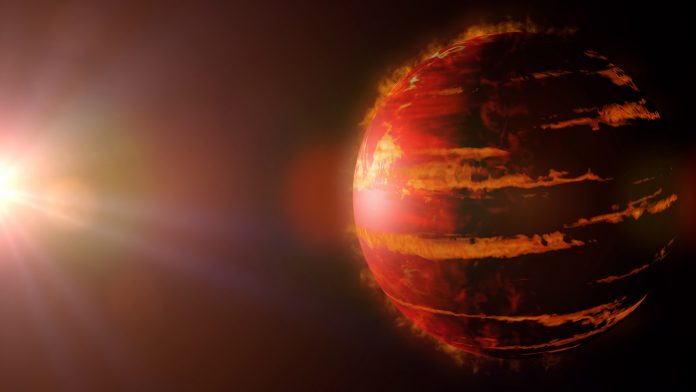A team of international researchers has detected five celestial bodies that may potentially illuminate the nature of enigmatic brown dwarfs.
The investigation, which was led by scientists at the University of Geneva (UNIGE) and the Swiss National Centre of Competence in Research (NCCR) PlanetS, in collaboration with the University of Bern, has distinguished five astronomical objects that may reveal the composition and origins of brown dwarfs, some of the most mysterious entities in the Universe.
Brown dwarfs are intergalactic objects whose masses are between planets and stars. However, the exact limits of their masses are hotly contested among the astrophysics community, as their constitution has stark similarities to low-mass stars, making it especially difficult to distinguish between them.
The results of the study are published in the journal Astronomy & Astrophysics.
Categorising brown dwarfs
Stars – just like gas planets such as Jupiter – are comprised predominantly of hydrogen and helium. However, stars are much larger than gas planets, meaning their gravitational force is so considerable that hydrogen atoms fuse to produce helium, subsequently emitting massive amounts of energy and light.
In contrast, brown dwarfs are not massive enough to fuse hydrogen, meaning they cannot produce the substantial light and heat that stars do; instead, they bind small amounts of a heavier atomic version of hydrogen called deuterium. This causes the light from brown dwarfs to be considerably weaker than stars, which is why they are often labelled by scientists as failed stars.
Nolan Grieves, a researcher in the Department of Astronomy at the UNIGE’s Faculty of Science, a member of the NCCR PlanetS and the study’s first author, said: “We still do not know exactly where the mass limits of brown dwarfs lie, limits that allow them to be distinguished from low-mass stars that can burn hydrogen for many billions of years, whereas a brown dwarf will have a short burning stage and then a colder life.
“These limits vary depending on the chemical composition of the brown dwarf, for example, or the way it formed, as well as its initial radius. To get a better idea of what these mysterious objects are, we need to study examples in detail. But it turns out that they are rather rare. So far, we have only accurately characterised about 30 brown dwarfs.”
A galactic breakthrough
By employing the Transiting Exoplanet Survey Satellite (TESS), the team has characterised five ‘companions’ that were initially identified as TESS objects of interest (TOI), TOI-148, TOI-587, TOI-681, TOI-746, and TOI-1213. They are called companions due to orbiting their respective host stars, which they complete within five to 27 days, display radii 0.81 to 1.66 times that of Jupiter and are between 77 and 98 times more massive, putting them on the borderline of brown dwarfs and stars.
Monika Lendl, a researcher in the Department of Astronomy at the UNIGE and a member of the NCCR PlanetS, said: “Each new discovery reveals additional clues about the nature of brown dwarfs and gives us a better understanding of how they form and why they are so rare.”
The researchers discovered that size and age are crucial to categorising a brown dwarf. François Bouchy, professor at UNIGE and member of the NCCR PlanetS, commented: “Brown dwarfs are supposed to shrink over time as they burn up their deuterium reserves and cool down. Here we found that the two oldest objects, TOI 148 and 746, have a smaller radius, while the two younger companions have larger radii.”
However, despite this discovery, there is still some ambiguity as to whether they are actually brown dwarfs, as they are close to the limit that could make them very low-mass stars.
“Even with these additional objects, we still lack the numbers to draw definitive conclusions about the differences between brown dwarfs and low-mass stars. Further studies are needed to find out more”, concludes Grieves.









